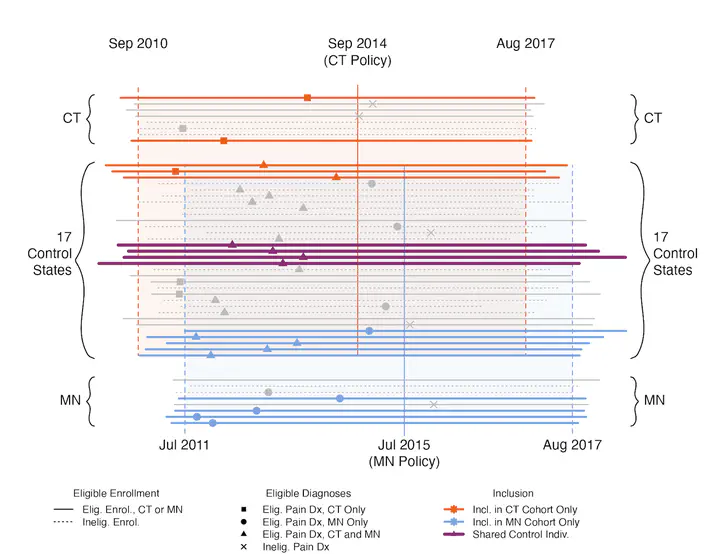Shared Control Individuals in Health Policy Evaluations with Application to Medical Cannabis Laws

Abstract
Health policy researchers often have questions about the effects of a policy implemented at some cluster-level unit, e.g., states, counties, hospitals, etc. on individual-level outcomes collected over multiple time periods. Stacked difference-in-differences is an increasingly popular way to estimate these effects. This approach involves estimating treatment effects for each policy-implementing unit, then, if scientifically appropriate, aggregating them to an average effect estimate. However, when individual-level data are available and non-implementing units are used as comparators for multiple policy-implementing units, data from untreated individuals may be used across multiple analyses, thereby inducing correlation between effect estimates. Existing methods do not quantify or account for this sharing of controls. Here, we describe a stacked difference-in-differences study investigating the effects of state medical cannabis laws on treatment for chronic pain management that motivated this work, discuss a framework for estimating and managing this correlation due to shared control individuals, and show how accounting for it affects the substantive results.